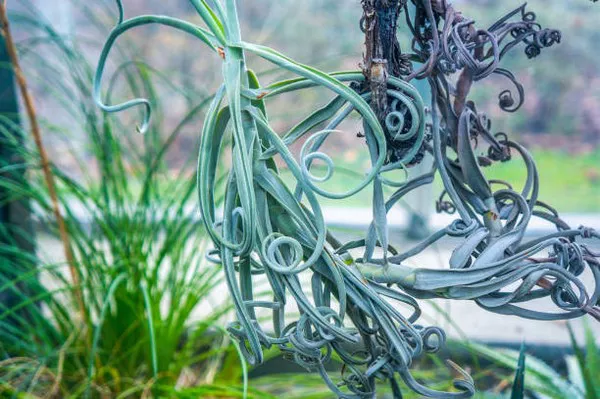Air plants, scientifically known as Tillandsias, have gained popularity as unique and low-maintenance houseplants. These fascinating plants don’t require soil to grow, relying on air and water for their sustenance. To ensure your air plants thrive and adorn your living spaces with their beauty, it’s essential to understand their specific care requirements. In this comprehensive guide, we’ll delve into the key aspects of air plant care, offering valuable tips to keep your Tillandsias healthy and vibrant.
Understanding Air Plants
Before delving into care tips, it’s crucial to understand the basic characteristics of air plants. Air plants are epiphytes, meaning they naturally grow on other surfaces, such as trees, rocks, or even telephone wires. These unique plants absorb moisture and nutrients through specialized trichomes on their leaves, eliminating the need for soil. There are over 600 different species of air plants, with various sizes, shapes, and colors, making them versatile and appealing for indoor gardens.
1. Light Requirements
Proper lighting is crucial for the well-being of air plants. While they are adaptable and can tolerate a range of light conditions, they thrive in bright, indirect light. Place your air plants near a window with filtered sunlight or in a location where they receive bright, indirect light for the majority of the day. Avoid exposing them to intense, direct sunlight for extended periods, as this can lead to leaf burn and dehydration.
2. Watering Techniques
Watering is a critical aspect of air plant care. Despite their name, air plants still need water to thrive. The most common method of watering air plants is through the soaking method. Submerge your air plants in room temperature water for 20-30 minutes once a week. Ensure that the entire plant is submerged, allowing it to absorb water through its leaves.
After soaking, shake off excess water and place the air plants upside down on a towel to dry thoroughly. Adequate drying time is essential to prevent water from accumulating in the base of the leaves, which can lead to rot. In drier environments, you may need to adjust the frequency of watering, increasing it to every 5-7 days.
In addition to soaking, you can also mist your air plants between waterings, especially in arid climates or during the winter when indoor heating can reduce humidity levels. Use a fine mist to lightly spray the leaves, ensuring they receive moisture without becoming waterlogged.
3. Temperature and Humidity
Air plants prefer temperatures between 50-90°F (10-32°C). They are relatively adaptable and can tolerate slight temperature variations, but it’s essential to avoid extreme temperature fluctuations. Protect your air plants from freezing temperatures, as exposure to cold can damage their delicate tissues.
Maintaining an appropriate level of humidity is crucial for air plant health. While they can adapt to various humidity levels, they thrive in environments with humidity ranging from 50-60%. In drier climates, consider placing a humidity tray filled with water and pebbles near your air plants to create a microclimate with increased moisture.
4. Fertilization
Air plants don’t extract nutrients from soil, so they rely on external sources for essential minerals. Fertilize your air plants once a month with a specialized air plant fertilizer or a diluted, water-soluble fertilizer with a low concentration. During the growing season, typically spring and summer, increase the frequency of fertilization to every 2-3 weeks to support healthy growth and flowering.
See Also: How Do Air Plants Grow? A Comprehensive Guide
5. Grooming and Maintenance
Regular grooming and maintenance contribute to the overall well-being and aesthetic appeal of your air plants. Remove any dead or dried leaves by gently pulling them from the base of the plant. Trimming dead foliage allows the air plant to direct energy toward healthy growth.
Additionally, inspect your air plants regularly for signs of pests, such as spider mites or scale insects. If you notice any infestations, treat your air plants promptly with an insecticidal soap or neem oil solution to prevent further damage.
6. Displaying Air Plants
Enhance the visual appeal of your air plants by displaying them creatively. Consider placing them in decorative containers, hanging them in terrariums, or arranging them on driftwood or stones. Air plants can also thrive in open terrariums or glass orbs, creating a stunning focal point in your home.
Conclusion
Caring for air plants is a rewarding and enjoyable experience, offering plant enthusiasts the opportunity to explore unique and low-maintenance greenery. By understanding their specific needs for light, water, temperature, and nutrients, you can cultivate thriving air plants that add beauty and charm to your living spaces. Incorporate these tips into your air plant care routine, and you’ll enjoy the delightful presence of these fascinating Tillandsias for years to come.

